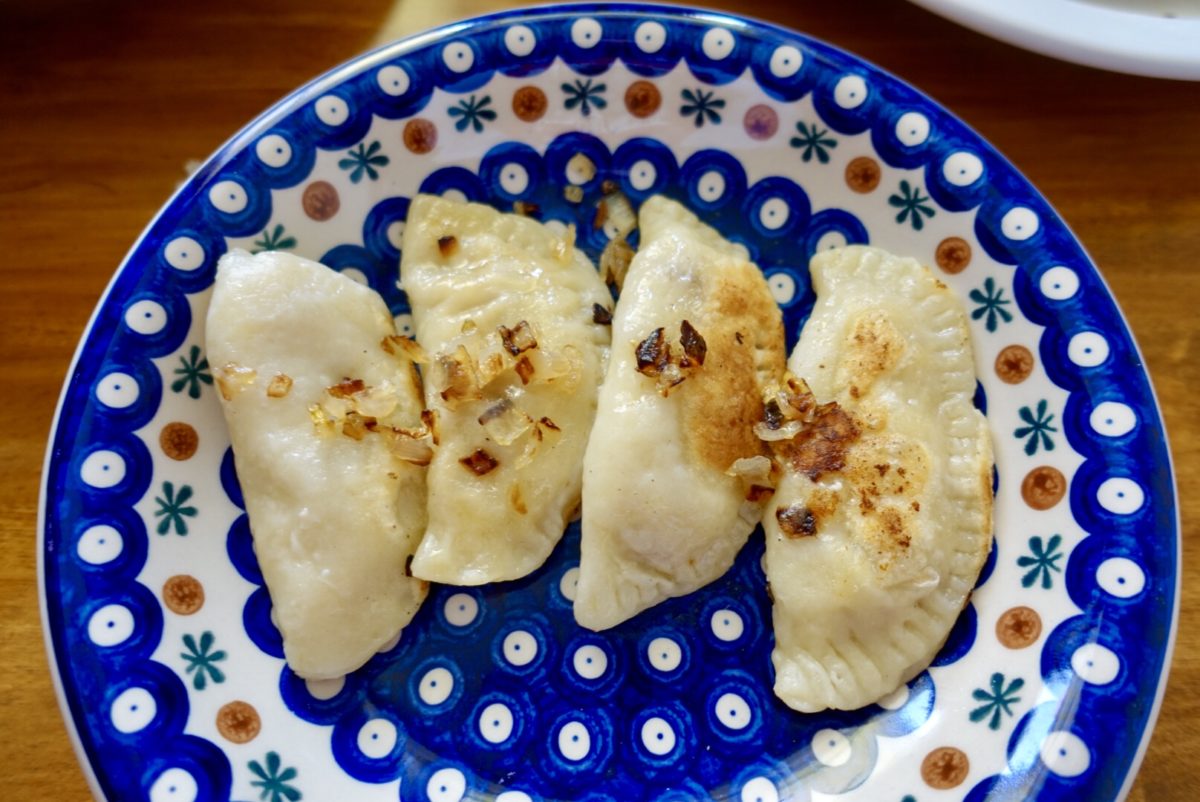The zapiekanka (a long, open-faced sandwich) was a beloved piece of my childhood. But not only mine — it was a miracle treat for a whole generation of Polish children who discovered it at the end of ‘80s (and who still buy one from time to time for sentimental reasons).
I will never forget the white trailer that parked close to my family home, and the old lady who sold from its window this first Polish “fast food” — a hot baguette with cheese and mushrooms. Zapiekanka. If I close my eyes I can still smell it, and remember that feeling of happiness, waiting in a long queue to spend the first bit of pocket money offered by my wealthy uncle.
For those who didn’t grow up in Poland, it can be hard to believe that an ordinary piece of bread and toppings became so popular. But in the past, if you could prepare the real-deal zapiekanka at home for a party, you’d feel like a local hero.
Today, zapiekanka is sold with many additional toppings, such as meat, all sorts of vegetables and even pineapple rings, but to be honest, I’m convinced that the traditional version is the best. The secret is to have a fresh baguette, good-quality cheese and mushrooms, and to bake it in the stove instead of in a microwave. And besides, the true flavour of zapiekanka comes from its nostalgia, and no fancy new toppings can beat that.
In our youth, what really shaped the taste of zapiekanka was this special feeling of trying something new and unknown on the one hand, and prohibited and secret on the other. It was the taste of change. The first-ever capitalist fast food in Poland tasted like liberty, and liberty tasted like a mix of ketchup and fried cheese. These were times when pizza, hamburgers or sushi were not available at all, so zapiekanka reigned on the Polish streets and undoubtedly started the street food fashion that is still in progress in Poland.

#localsknow where to get authentic zapiekanka | Photo by Krakow Urban Tours
In Krakow, you can buy zapiekanka everywhere, but local residents know that there’s only one place where this special taste has survived the turbulent years of transformation. A microscopic shop in the middle of Sienna Street, a stone’s throw from the Main Market Square, Zapiekanki od 1980 roku still maintains tradition and, since 1980, has been selling true zapiekanka.
Ms Marta opened her shop at a time when the cracks in Poland’s Communist regime were starting to crumble; many say her stall was the first fast food restaurant in Krakow — a place where on-the-go meals were sold, flauting the law forbidding American-style cuisine. Her toasted open-faced sandwiches became a symbol of freedom, and eating one was a way of fighting the regime. Today, Marta’s shop doesn’t hold the same political power, but for the locals who remember, her simple sandwich holds heavy, nostalgic significance.
Even though her tiny shop is open from 10am to 7pm, her busiest time is the lunch rush between noon and 2pm. On any day, you’ll find a range of Krakow locals grabbing lunch — construction workers on break from street projects, professors from the university, actors from the nearby theatre. Don’t be surprised if the person ahead of you in line, sharing local gossip with the owner, is a famous Polish celebrity grabbing a bite to eat.
People come here not just for the best hot sandwiches in the city, but to talk with the women who have been working here for some 30 years, Ms Martha and Ms Anna. For three decades, they have politely listened to all the problems and concerns of their customers; they have shared joys and heartache and seen the next generation grow up. It remains a place where I can go with my own mother and my four-year-old daughter and together we all can have a taste of my childhood and of liberty.
How to find it: 3 Sienna Street. It’s a small street between two of the main tourist points of the city, Main Square and Small Square, and is a one-minute walk from either square. (Psst, Small Square is also the meeting point for our Food by Foot tour.)
What to order: Traditional zapiekanka (no extra toppings!); fresh beetroot juice.
Krakow Food by Foot
Learn about Krakow through the best local restaurants and bars on this walking tour of traditional Polish food and historical monuments. After all, the best way to understand how to live a local is to eat like a local! Get your first taste of Polish cuisine and local beer over a discussion on Polish gastronomy in Small Market Square.











